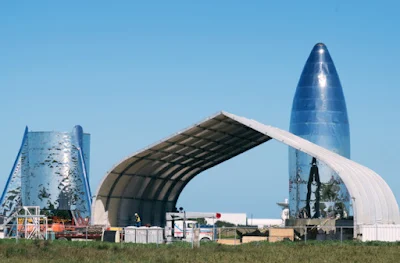2020 has proven to be a unicorn for medical information technology, with telehealth the leading use for health care. However, it will not be the only unicorn in this space.
We spend a great deal of time, and I do mean a great deal of time exploring the digital health space. It has become my latest passion, and I have had several in my life. It started with amateur radio as a pre-adolescent somewhat autistic kid, graduating to biochemistry and genetics and went full tilt with medicine and ophthalmology. That phase lasted over 40 years when I began to pursue the evolving changes in medical records.
Along the way, my vision coincided with some very powerful people in Washington, D.C. My vision was prescient in health information interoperability at a time when no one knew what a RHIO, or HIE does.
A surefire way to fail is to not know where you are going. Take Elon Musk as a great example. Even as a young adolescent his plan was to go to Mars. This was not a dream for Elon....it was going to be a fact. As any engineer will tell you you must work the problem, the next step on your ladder to the top floor. Musk has the ability to analyze what are the basic problems. Not only did he want to go to Mars, but he also wanted to take a lot of people with him.
He was never mired down in corporate or government bureaucracy. He quickly saw that space travel was too expensive and wasteful. He viewed space vehicles as aircraft that took off to their destination, landed, and did the same thing over and over. The vehicles were not discarded after one journey and could be refueled with minimal refurbishment.
His early success with SpaceX depended upon. using highly reliable rocket motors that already had a good track record for reliability. An outgrowth of the Russian space program the Raptor engine powers the 'water tower rocket
The early launch failures were not due to engine failure. Now his attention has turned to use simple proven materials such as stainless steel fabrication, which can easily be assembled by skilled welders and steelworkers. His new starship series resembles no more than a tall water tower with small fins. Starship can be enlarged easily by adding on another layer of rings. He does not use expensive lightweight carbon structures such as those in new airplanes. He plans to overcome weight restrictions using sheer overwhelming 'firepower'
The first time I saw Bolsa Chica Spaceport I was stunned. Then I saw Elon's wisdom. He bought (or leased) a remote island off the coast of southern Texas. It had easy access to navigable water for transportation of rocket vehicles if needed. The location also provided a safety corridor for rockets, should one crash or explode. Elon probably bought the land under an assumed name for 'dirt cheap'. He began manufacturing rockets under the open sky and eventually put up semi-portable canvas covers. He used this same technology in Hawthorne, California, when he started Tesla and found that the existing structures were inadequate and would be too expensive to rehabilitate for, is robotic manufacturing.
Where are you in the Covid 19-time warp? Have you formulated your plan for Covid 20-21? In the next five years, most of what we have adopted will have become routine. Where do you see yourself in ten or fifteen years? Are you the type that will sit and let progress sweep you along, or are you like many who will determine your fate?
You are not alone, most physicians are busy enough and just make it through the day. There is little time for creative thought. If you want help, call on Digital Health Space. There is no obligation other than to be sincere and open to share your hidden thoughts and fears.
In the next several month Digital Health Space will be partnering with other visionaries, such as
Text me at 951-217-9629 to make an appointment



No comments:
Post a Comment